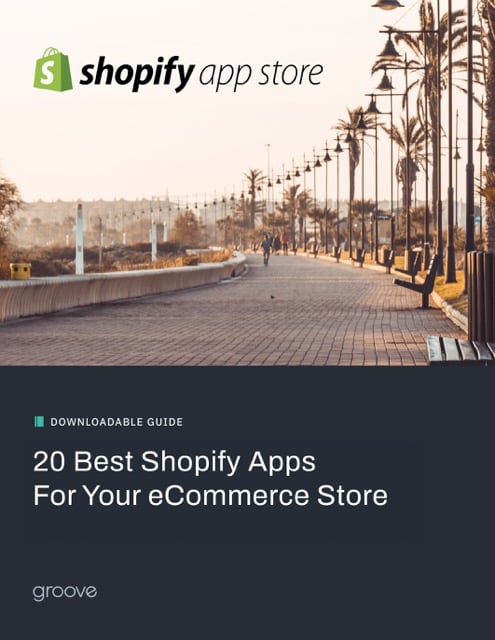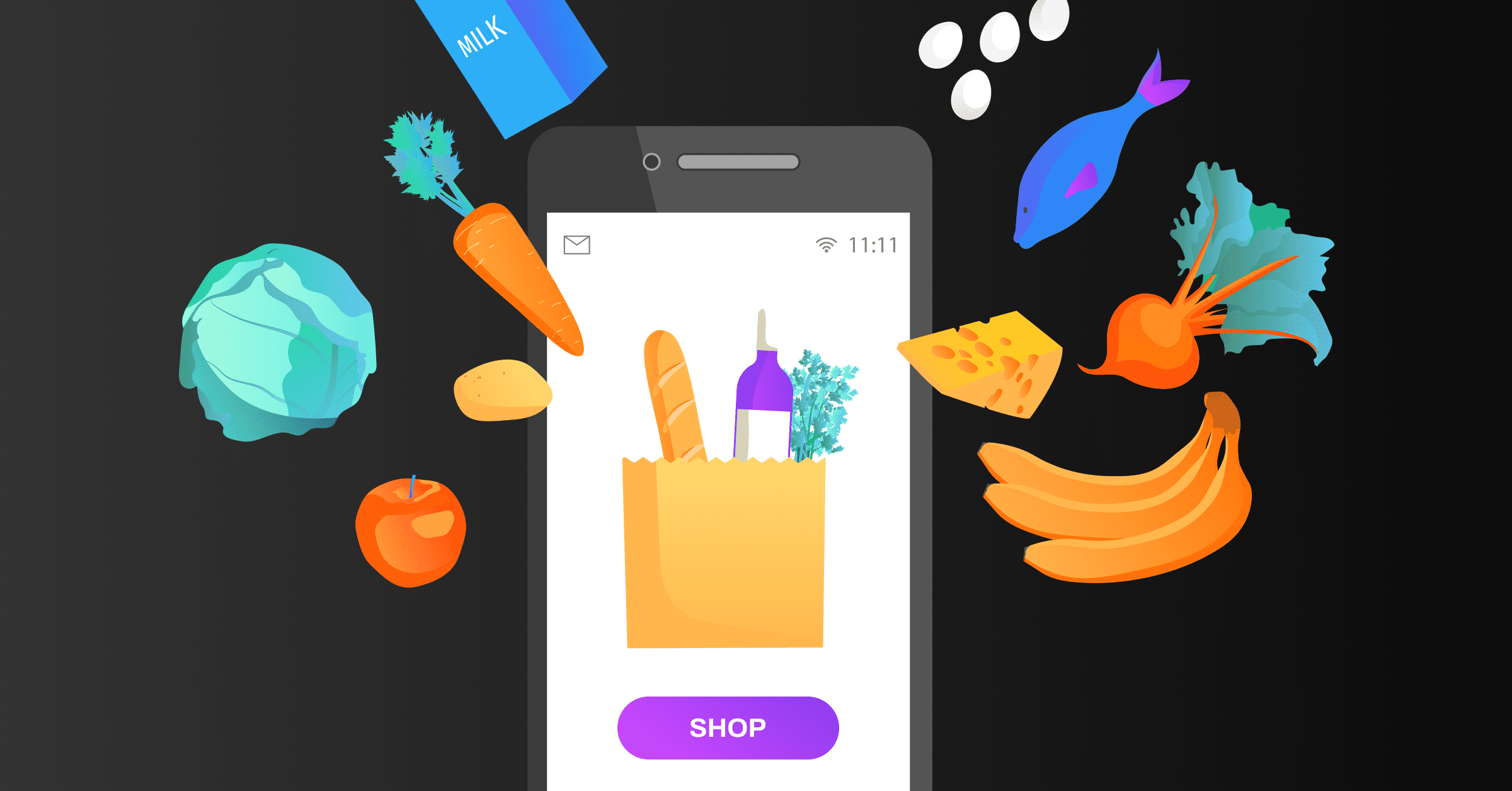Those of us who live, sleep and eat in the eCommerce ecosystem can be in a bit of a bubble when thinking about economies as a whole. There are countless successful food and beverage franchises around the world with little to no online presence. Selling online enables long-time brands to reach and market to new audiences they have never sold to before. Take Dippin’ Dots for example, which our team enabled to sell online directly to customers for the first time in the company’s 20-year history.
Why do so many brands with large customer bases, brand recognition and capital get stuck in their tracks when they begin considering eCommerce? Below we will break down each roadblock and how merchants can leverage eCommerce tools to thrive in today’s vast digital marketplace.
Production
Production refers to the creation of food or drink products from raw ingredients. This can vary greatly depending on the specific items, brands and regions in play. Please note that there are federal and state-specific requirements that all food producers need to be aware of and follow.

Doc Popcorn is a sister brand of Dippin’ Dots that offers delicious gourmet popcorn. This brand pops its product fresh at its brick-and-mortar franchise locations to serve customers. Franchisees order seasonings, oils, raw popcorn kernels and all other materials as needed.
Challenge
When we designed and developed this client’s new website on BigCommerce, we collectively needed to decide the best purchasing and production workflow for eCommerce customers.
One option was to offer the materials unprepared directly to consumers. Although some customers may have the equipment and technical know-how to prepare the product correctly, in the case of this client, most would not. This would likely lead to ruined products and unhappy customers. In short, Doc Popcorn would have no quality control over its products.
The second more costly option would be to centralize production of both franchisee orders and eCommerce orders under the same roof. Unfortunately in the case of this retailer, their current facility could not accommodate this level of production. Doc Popcorn would need to build an entirely new facility which would be both time and cost-prohibitive. Ultimately, this client decided to take another route.
Solution
To combat these issues, Doc Popcorn created a plan for the franchised location closest to each customer to prepare and ship orders themselves. This solution allowed the client to maintain their existing production workflow, while providing additional revenue to franchisees
Storage
Product storage is where many brands lose a sizable percentage of their profit margins. However, storage is an overhead cost that is simply a part of selling products online. For years, brands have tried to implement “just-in-time logistics” to keep inventory overhead as low as possible.
In the case of food and drink brands, this importance is magnified. Not only is there a cost associated with storing the product, but it must also be kept in a climate-controlled environment. On top of that, if the product is stored for too long, it will expire and become a sunk cost, which then takes additional capital to dispose of properly.
Dippin’ Dots serves tiny nitrogen-frozen ice cream “dots” to consumers at theme parks, entertainment venues and brick-and-mortar stores across the United States. To store this product, its container must be kept at sub-freezing temperatures only achievable either through a specialty freezer or frozen CO₂, also known as dry ice.
Challenge
To store mass amounts of sub-frozen products is extremely cost-prohibitive. This means that for the product to sell online profitably, it would have to be produced and shipped within a very short amount of time.
Solution
Dippin’ Dots now leverages the exact same production line for eCommerce purchases that they do for orders from their franchisees. This means that no additional production lines will need to be implemented in order to get this historically franchised product directly to consumers.
Shipping
Everybody who sells products of any kind online understands that a large percentage of the total price of a product is accounted for in shipping. Shipping costs include labor, packing materials and postage. Challenge
Challenge
Dippin’ Dots products must be shipped, received and temperature stabilized to sub-freezing levels within 48 hours to ensure the product is not melted before consumption. If the product is melted, liability rests with the manufacturer to either provide a replacement or a refund.
This brand had to consider the shipping cost of its products. However, charging too high of a price had the potential to dissuade shoppers from purchasing.
Solution
Frozen products such as Dippin’ Dots must be shipped using dry ice. The cost of shipping materials including dry ice is quite high due to the volume of the package, as well as its weight. To account for this, this client implemented a standardized shipping container size to cut down on packaging costs as much as possible.
Although dry ice is used, the package must still be received by the customer a maximum of 48 hours after being shipped. To guarantee this, our team implemented a delivery date selection calendar directly into BigCommerce’s one-page checkout.
However, shipping methods such as those listed above do not make economical sense if a customer was to only buy a single serving. Because Dippin’ Dots had elected to only sell their products to online customers once a product quantity threshold was met, the high cost of shipping is effectively divided by 30. Shipping methods such as this make no economical sense if a customer was to only buy a single serving. Each shipment also includes the necessary disposable cups to recreate an authentic Dippin’ Dots experience.
Customer Experience
Customer Experience is what makes a customer return time and again. If a restaurant has amazing food and drinks, but the service is rude and the bathrooms are unclean, first-time customers are unlikely to return.

Challenge
It can be very difficult for brands with a heavy physical presence to recreate the feeling their physical brand gives customers in a digital environment. The smells, packaging, branding, noises and other factors that are present at a brick-and-mortar location are often what draw repeat customers back to the store.
Solution
Incorporate that special branding into each step of the online customer’s journey. Make sure that visitors of your website know that it is your brand’s website well before they ever see your logo. This can be done by leveraging the same graphics assets, tonality, colors, animations and imagery.
Once a customer has checked out, make sure that the packaging materials you use display the same enthusiasm that a customer perceives in your store. The outside of your cardboard box should be branded and the items inside should be branded accordingly to match the physical experience as best as possible.
eCommerce Platforms:
The eCommerce platform a merchant chooses will often determine how their business will run and grow for the next 3-5 years For food and drink retailers with an existing physical presence, the seriousness of this decision is two-fold. Not only will online customers be interacting with your site, but fans of your physical locations will as well.
Challenge
It is impossible to list all of the different challenges that each specific merchant could face with a given platform. These could range from particular selling features being completely unavailable to necessary custom integrations not being supported. Whatever the needs of your individual company, you will need to make sure that the platform you choose has the feature set and custom-development abilities required for success.
Solution
Some eCommerce platforms are larger than others in terms of the number of individual merchants that host their stores there. In the case of food & perishable brands, we find that BigCommerce is far and away the best solution on the market. Whether your brand requires quantity discounts, membership discounts, shipping integrations, marketing integrations, or custom development, BigCommerce can do it all.
Conclusion
Taking your physical franchise brand into the 21st century by enabling new customers to buy online is a large hurdle to overcome. Understanding the challenges you will face and forming creative solutions is what every other franchised brand has had to go through. Take your brand to the next level by beginning a conversation with one of our eCommerce experts by filling out the form below.

E-BOOK
20 Best Shopify Apps For Your eCommerce Store
Explore tags:
About the author
Subscribe to the Groove Newsletter
Get the latest updates and insights straight to your inbox



